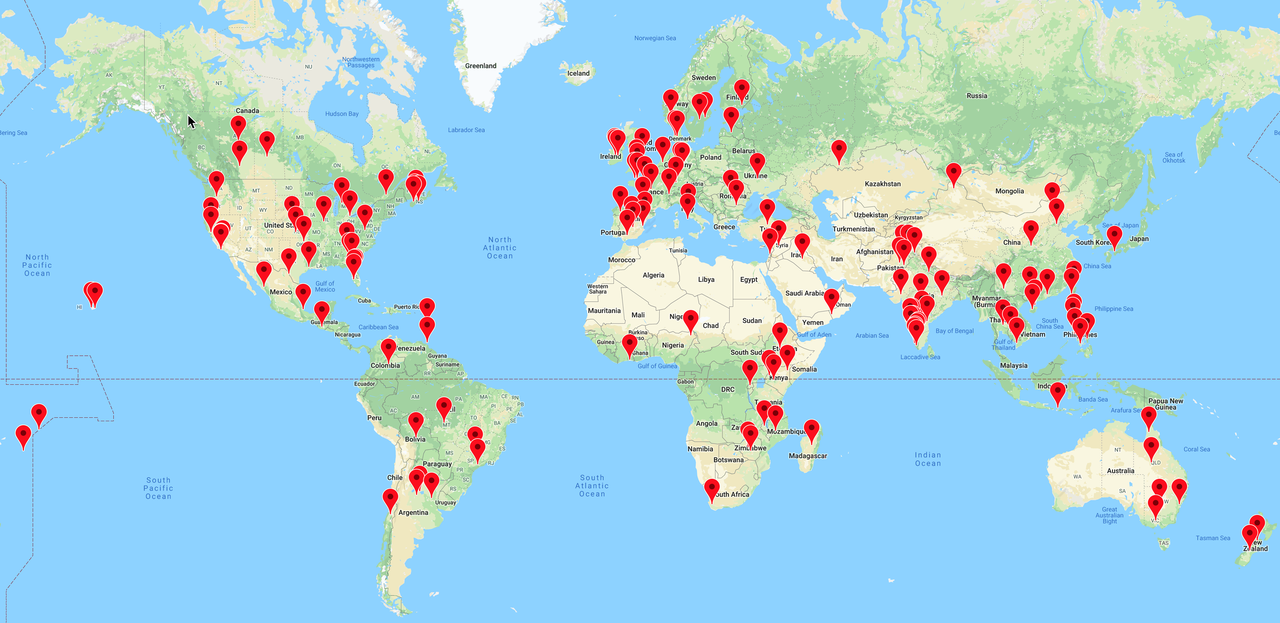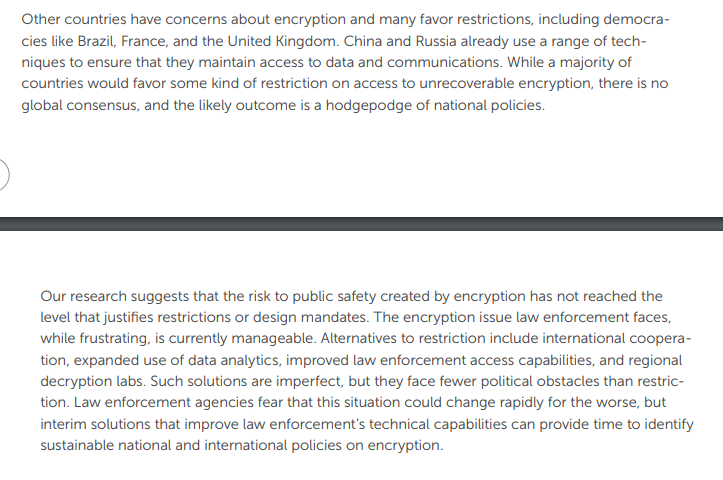You don’t have to be an avid consumer of news about the federal government to know that Uncle Sam’s annual budgeting process is a mess. The budget is rarely completed on time, and it always seems to get bogged down with partisan bickering and political scheming. The process is often interrupted or transformed into an emergency by fiscal cliffs and government shutdowns, and it faces numerous chronic problems as well, from dead-on-arrival White House budget plans to perpetually ignored statutory deadlines.
When the dust finally settles, the result is usually a bloated agglomeration of goodies for special interests that most likely had a better grasp of the budget’s contents than the elected representatives who voted on it (probably without ever reading it). Of course, almost every budget is bigger than its predecessor.
If the budgeting process is broken, it’s apparently been broken for a long time. Since the enactment of the Budget Control Act of 1974, which dictates the current rules and was meant to make Congress more accountable, legislators have passed all 12 of the required discretionary spending appropriations bills on time on just four occasions. Instead of an orderly process, we tend to end up with omnibus spending legislation that wraps everything into one giant spending bill or short-term “continuing resolutions” that punt on hard choices.
Various “fixes” have been proposed to right the budget process. One recurring idea is that we should replace an annual budget with a biennial budget, covering two fiscal years. Supporters argue that a longer budget period would give legislators more time to conduct oversight of federal programs and, thus, more time to weigh competing spending desires. With more time, spending would supposedly be better targeted toward those programs that “work,” while those that “don’t work” would either be “fixed” or see their funding cut thanks to better oversight.
This is wishful thinking. In the 19 states that currently have such a process in place, the opposite is true. Biennial-budget states actually spend more money, while oversight remains flat.
And congressional oversight is overrated. Oversight hearings are often just political dog-and-pony shows of little or no consequence. In many cases the whole point is for politicians to make statements that can then be used during political campaigns. These events are designed to benefit lawmakers, not the public.
The same can be said about budget-process reform, argues Stan Collender, a budget expert who teaches at the McCourt School of Public Policy at Georgetown University. His take is that the process actually works exactly as legislators want it to work. Indeed, for all the complaints that the budget process receives from those in charge, it enables politicians to do what they want to do (cater to interest groups) while avoiding what they don’t want to do (live within their means).
The growth of mandatory spending exacerbates the problem. Outlays on Social Security, Medicare, and Medicaid, as well as interest payments on the debt, aren’t appropriated each year in the manner of discretionary programs covering education, transportation, and the like. As a result, those programs can’t be used to distribute favors (though promising not to reduce spending on them often indirectly serves that function). As the number of people benefiting from the entitlement system grows and the eligibility rules are relaxed, a bigger and bigger share of spending has to be directed toward it. Today, 70 percent of the budget is spent on such programs, compared to 40 percent in 1970. Politicians therefore have less money to fling around on new spending meant to curry voter favor.
It’s true that some members of both houses talk about reforming the budget process to make it more rigorous and fiscally responsible. They have even formed House and Senate budget committees and held hearings on the issue. However, Collender believes that “this activity is less designed to retool the budget process than it is to placate all those who are so fervently saying that it needs to be reformed: the interest groups, think tanks, and associations that make up the inside-the-Beltway federal budgeting community.”
This situation is tragic. This chaos, and the resulting failure to follow budget rules, has led to an unremitting expansion of the size and scope of government. This U.S. debt, meanwhile, has more than doubled in the last 10 years, recently reaching $22 trillion. If it continues as projected, Washington will find itself in a tough spot, vulnerable to the risk of interest-rate hikes, an inability to increase spending on short notice to respond to emergencies, and slower growth overall.
Interest in how to design a better budget process—one that actually limits the growth of government—isn’t new. F.A. Hayek wrote in 1948 that Adam Smith’s “chief concern was not so much with what man might occasionally achieve when he was at his best but that he should have as little opportunity as possible to do harm when he was at his worst.” The goal must therefore be “a social system which does not depend for its functioning on our finding good men for running it, or on all men becoming better than they are now, but which makes use of men in all their given variety and complexity, sometimes good and sometimes bad, sometimes intelligent and more often stupid.”
It was the 1986 Nobel laureate James Buchanan who really pioneered the notion that good fiscal rules are key to controlling government spending and restraining government borrowing. His extensive body of work shows that, at least in theory, these rules can enforce budgetary restraints by tying politicians’ hands.
As the structural roots of budget deficits have become more widely understood, a growing number of countries have adopted fiscal rules to reshape democratic governance. The Columbia University macroeconomist Pierre Yared found that in 1990, only seven countries had such restrictions in place, but by 2015, 92 countries did. Governments across the world have been mandating deficit, spending, and revenue limits to constrain fiscal policy and curtail further increases in government debt.
These fiscal rules are broadly effective. Comprehensive data covering many years show that countries with such rules have annual budget deficits that are smaller by an average of 0.5 percent of gross domestic product (GDP) when compared to countries without such rules.
But not all rules are created equal when it comes to limiting government profligacy and slowing the growth of debt. Yared and Yale economist Marina Halac recently found that rules based on outcomes (e.g., setting a rule, preferably through a constitution, that limits spending growth to a certain percentage of GDP) tend to work better than rules based on short-term and arbitrary restraints, such as the “sequestration” requirement included in the debt ceiling deal of 2011, which lawmakers can lift easily. More specifically, expenditure-based rules and debt caps have higher rates of compliance in advanced economies than do balanced budget rules—around 70 percent vs. 35–55 percent. Compliance, which is fundamental to the success of fiscal restraint efforts, is even greater if the rules are legally enshrined or constitutionally binding.
Hong Kong
While there are many troubling aspects of governance in Hong Kong, it might actually represent the gold standard of good fiscal policy.
“Our commitment to small government demands strong fiscal discipline,” the territory’s financial secretary, John Tsang, explained in a 2014 speech at the Heritage Foundation. “It is my responsibility to keep expenditure growth commensurate with growth in our GDP.” That may sound like something a politician would say during a speech, but in Hong Kong it’s actually a constitutional requirement. Article 107 requires that the government strive to achieve a fiscal balance, avoid deficit, and, more important, make sure government spending doesn’t grow faster than the economy.
When their constitutions demand fiscal restraint, politicians go out of their way to anticipate the problems they might encounter in the future. Tsang noted, for example, that he had created a Working Group on Long-Term Fiscal Planning and directed it to conduct a fiscal sustainability health check. “We are keenly aware of Hong Kong’s low fertility rate and aging population,” he explained, “not unlike many advanced economies. And that can pose challenges to public finance in the longer term.”
Hong Kong’s public spending hasn’t risen above 13.5 percent of GDP in several decades, compared to 38 percent in the United States. Its debt is close to zero; social welfare spending remains steady around 3 percent of GDP (vs. 18.7 percent in the U.S.); and the share of the population relying on social security assistance has gone down from 8 percent in 2005 to 5.4 percent in 2014.
Switzerland
The Swiss are known for their fine watches and chocolate. They should be recognized also for the comparative excellence of their fiscal rules. After public referenda in 2001, the Swiss government in 2003 implemented a new constitutional requirement aimed at ensuring a balanced annual budget through a cyclically adjusted expenditure ceiling. The short story is that Swiss politicians are not allowed to increase spending faster than average revenues rise over a multiyear period (as calculated by the Swiss Federal Department of Finance). That basically confines spending growth to a rate no higher than the rate of inflation plus population growth.
Significantly, the Swiss “debt brake” rule appeals to economists and policy makers on both sides of the aisle. The fiscally conservative types like it because it is effectively a spending cap. It also makes it impossible to raise spending during good times, since the rate ceiling is taken from an average over several years, so the treasury’s coffers during such periods become flush with cash.
Key to this design is the fact that it is more difficult than it might seem for politicians to increase the spending cap by raising taxes. As economist Dan Mitchell of the Center for Freedom and Prosperity explained in The Wall Street Journal, “Maximum rates for most national taxes in Switzerland are constitutionally set (such as by an 11.5% income tax, an 8% value-added tax and an 8.5% corporate tax). The rates can only be changed by a double-majority referendum, which means a majority of voters in a majority of cantons would have to agree.”
Yet the debt brake also appeals to economists and policy makers who favor deficit spending when revenues plummet during economic downturns, because the rule allows for spending in excess of estimated revenues under special circumstances. This escape clause, which applies to recessionary periods, effectively deals with unforeseen emergencies without putting the rule at risk in the medium to long term.
There’s no arguing with the results: Annual spending growth fell from an average of 4.3 percent before the rule was implemented to 2.5 percent after. And in 10 out of the past 14 years, Switzerland has had budget surpluses. Deficits have remained rare and small, averaging 0.85 percent of GDP during this period. At the same time, Swiss debt has fallen from almost 60 percent of GDP in 2003 to around 42 percent in 2017. Switzerland now finds itself in an unusual place, with policy makers frequently debating what to do with all of their surplus revenue—a situation that seems a million miles away from the fiscal conditions in the United States.
In 2010, Germany adopted a policy similar to the Swiss debt brake. The rules are parallel to each other in that each follows the “small-government Keynesianism” model that allows the government to spend in a recession but cuts expenditures in good times, creating surpluses for when the country needs them. While the German rule isn’t as strict as the Swiss one, it has successfully reduced Germany’s public debt from 80 percent of GDP in 2010 to 64 percent of GDP in 2017.
Denmark
Vermont Sen. Bernie Sanders loves to tout Denmark as his model of a socialist paradise. The country is certainly no libertarian ideal, yet since the 1970s it has undertaken impressive reforms to address the serious fiscal issues brought on by the Danes’ very generous welfare programs. Among other reforms, Denmark has lowered its top income tax rate from 73 percent to 63 percent, lowered the corporate tax rate from 50 percent to 22 percent, abolished the wealth tax, reduced the length of government-supplied unemployment benefits from indefinite to two years, and raised the retirement age.
Denmark also implemented some interesting process-oriented reforms to more systematically control spending. In 2014, it passed a budget act aimed at ensuring a balance or surplus on the general government balance sheet as well as appropriate expenditure management at all levels of government.
The rule sets a limit of 0.5 percent of GDP on the structural—or persistent—budget deficit. Policy makers decided that managing spending under the condition of maintaining a balanced budget over time would lead to a stronger fiscal position in the long run. They also designed the system to take discretion out of their own hands by subjecting themselves to independent monitoring by the Danish Economic Council, which can impose automatic correction mechanisms in the event of a budget deviation. Such an action forces the Ministry of Finance to present an adjustment plan for the following year.
In addition to its structural deficit rules, the budget law introduced four-year rolling expenditure ceilings. These ceilings set legally binding limits for spending at all levels of government and by program. If one program spends under its cap, the remaining money cannot be reallocated to another program.
The Danish Economic Council assesses annually whether government policy is adhering to the target structural public balance and whether the proposed expenditure ceilings are consistent with medium-term projections in the structural balance for public finances.
According to data from the Organization for Economic Co-operation and Development (OECD), Denmark’s fiscal position improved significantly in the three years after implementation of its budget act. General government debt fell from 59.14 percent to 49.96 percent of GDP in that time, while central government debt fell from 38.22 percent to 29.88 percent of GDP, according to the International Monetary Fund (IMF). And in 2017, the country ran a budget surplus equal to 1.09 percent of GDP.
The Netherlands
For such a small country, the Netherlands has a lot going for it: Amsterdam, pot, tulips, bike paths. As it turns out, the IMF, the OECD, and the European Commission have also regularly highlighted the Dutch fiscal framework as an example of good practices that achieve a high degree of budgetary transparency. The framework has several commendable features, such as its medium-term (rather than short-term) orientation and use of independent macroeconomic forecasts.
Under the Sustainable Public Finance Law, passed in 2014, expenditure ceilings are set for three main budgetary areas—central government, social security, and health care—and benchmarks are set for revenues. While the revenues can fluctuate over the multiyear cycle, the expenditure ceilings must be respected as statutory requirements.
The Netherlands’ deficit ballooned beyond 3 percent of GDP from 2009 to 2013, but the country has seen noticeably improved fiscal conditions since 2014, especially compared to countries with other fiscal frameworks. In 2017, the government ran a budget surplus of 1.22 percent (compared to a deficit of 2.15 percent in 2014), and according to the OECD, general government debt fell during those three years from 82.60 percent to 69.95 percent of GDP.
Why Most Rules Fail
Governments across the spectrum (from free market Hong Kong to Bernie Sanders’ beloved Denmark) have implemented prudent budget rules and policies. The ones that are most effective share some common features: They all impose a limit on the growth of spending (as opposed to the balanced-budget constitutional requirement favored by some economists), and they all set automatic triggers to reduce politicians’ discretion.
At this point you may be wondering: If they can do it, why can’t we? That’s the $22 trillion (and counting!) question. So what is it that convinced politicians in these other countries not simply to adopt fiscal rules but to adopt fiscal rules that truly constrain them?
I wish I knew. Financial crises, staggeringly large debts, slow economic growth, and angry voters probably all nudge politicians to adopt a fiscal rule. But the data show that even when politicians do take steps to address fiscal problems, more often than not they choose policies that don’t work. Adopting the right rule—the kind that actually shrinks the growth of government—is what matters.
The same is true at the level of U.S. states. As my colleague Matthew Mitchell’s work on tax and expenditure limits (TELs) demonstrates, the design of the rule is what explains whether these TELs will control spending or not: The ones that are effective all tend to be constitutionally codified, to focus on spending rather than revenue, and to include provisions that require majority support to override.
Some TELs work pretty well, but these are exceptions rather than the norm. In other words, state officials and legislators often avoid designing rules that would actually tie their hands.
The literature on “fiscal adjustments”—the combination of expenditure and taxation increases and decreases—shows the same result. Economists have demonstrated that the way to reduce the government’s debt-to-GDP ratio is to adopt fiscal adjustment packages mostly made of spending cuts, preferably to entitlement programs. But in 80 percent of the cases where fiscal adjustment packages were put in place, politicians opted to rely more on tax hikes than on reductions in outlays.
The American Enterprise Institute’s Benjamin Zycher looked at the failure of TELs to deliver on their promise to constrain spending. He concluded that “the limits themselves are the products of the same political pressures and election dynamics that yield [the] fiscal outcomes” they are supposed to battle. “Moreover,” he wrote, “the competition among political interests that results in budget outcomes also is likely to weaken or circumvent limits that otherwise would be effective.”
Basically, the same forces that result in the government growing, debt piling up, interest groups getting what they lobby for at the expense of everyone else, and budget process drama are at play during the making of government fiscal rules. No wonder the constraints more often than not fail to accomplish what they’re meant to.
Yet some places do manage to overcome these forces. We can look to them for inspiration.
from Latest – Reason.com https://ift.tt/2XkwwDx
via IFTTT








